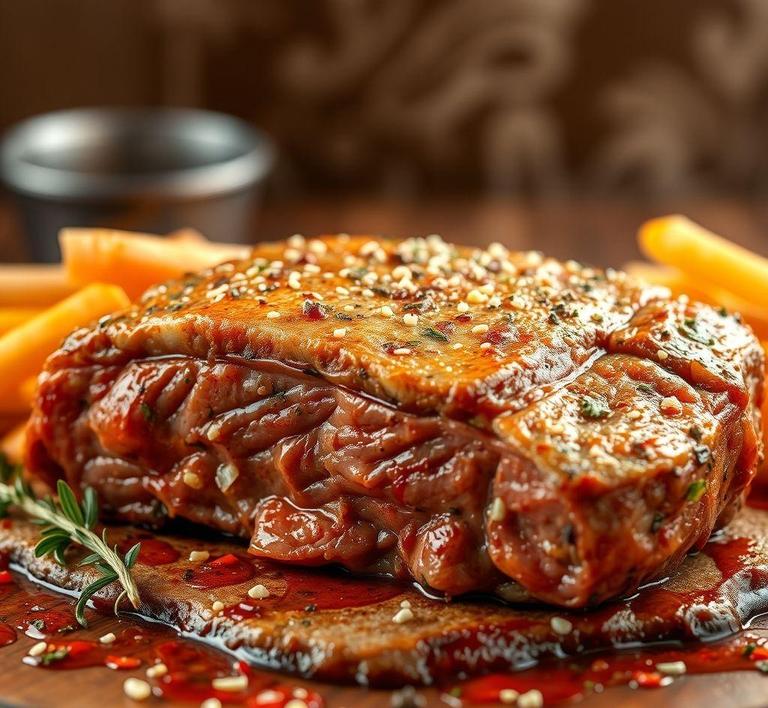If you’ve ever found yourself with leftover Beyond Meat, you might be wondering whether you can refreeze it to save for later. Refreezing plant-based meat alternatives like Beyond Meat can be a bit tricky, but it’s definitely doable with the right precautions. While freezing Beyond Meat initially is fine, refreezing can impact the texture and flavor, so knowing the best practices can help ensure it stays as delicious as when it was first cooked. In this guide, we’ll break down how to properly refreeze Beyond Meat, the potential changes you may notice, and tips to preserve its quality for your future meals!
Can You Refreeze Beyond Meat?

When it comes to plant-based alternatives like Beyond Meat, the question of refreezing is a common one, especially given the growing popularity of plant-based diets and products. Beyond Meat is designed to replicate the taste, texture, and cooking experience of traditional animal-based meat, but it is still a processed food made from pea protein, rice, and other plant ingredients.
Technically, Beyond Meat can be refrozen. However, there are several factors to consider before you decide to do so. The product itself doesn’t contain the same kind of bacteria or spoilage risks associated with raw animal meat, but that doesn’t mean the refreezing process doesn’t have implications.
When Beyond Meat is frozen initially, it’s done at a controlled temperature to preserve the flavor, texture, and nutritional content. When you defrost it, the product undergoes a change in structure, with moisture content potentially being lost or redistributed. Refreezing it introduces a new set of challenges. If done improperly, the second freezing cycle can result in a noticeable degradation in the texture and overall quality of the product.
In addition to these changes, Beyond Meat doesn’t have preservatives or additives that would help it withstand multiple freeze-thaw cycles. So while it’s not dangerous to refreeze Beyond Meat, it’s important to think about whether you’ll still enjoy it once you do.
How To Refreeze Beyond Meat?
If you’ve decided that you need to refreeze your Beyond Meat, it’s important to follow the correct steps to ensure that the quality is preserved as much as possible. Here’s how to go about it:
- Check for Freshness: Before you even think about refreezing Beyond Meat, ensure that it has been handled correctly during its initial thawing process. Beyond Meat should never be left at room temperature for extended periods of time. The safest way to thaw it is in the refrigerator, allowing it to defrost slowly and maintain its structural integrity.
- Divide and Conquer: If you’ve thawed more Beyond Meat than you plan to use, divide the portions into smaller, usable amounts before refreezing. This allows you to avoid defrosting the entire batch again when you only need a portion, thus preventing unnecessary cycles of freezing and thawing.
- Use Airtight Packaging: After dividing your Beyond Meat, package it in airtight freezer bags or containers. Removing as much air as possible helps to prevent freezer burn, which can seriously impact the quality of your product. Vacuum-sealing is even better if you have access to a machine, as this will provide a tight seal that ensures minimal air exposure.
- Label and Date: Even though Beyond Meat doesn’t typically spoil as quickly as meat, it’s still a good idea to label your frozen product with the date. This will help you keep track of how long it’s been stored. Ideally, you should use the refrozen Beyond Meat within a month or two for the best quality.
- Refreeze Quickly: Once you’ve packaged the Beyond Meat properly, make sure to place it back in the freezer immediately. The faster it returns to a frozen state, the less chance there is for the quality to degrade. It’s important to avoid leaving the refrozen product out for any prolonged period.
Quality Impact
The primary concern when refreezing Beyond Meat is the potential impact on quality, particularly in terms of texture, flavor, and moisture. These elements are crucial to the sensory experience of eating plant-based meat, and any degradation in quality could lead to an unsatisfying meal. Here are the main quality changes you might encounter:
- Texture: Beyond Meat, like many plant-based proteins, is designed to mimic the texture of ground beef or other meats. Freezing and thawing can cause the structure to break down, making the product more rubbery or mushy when cooked. This happens because the water content inside the product expands as it freezes, creating ice crystals that can disrupt the protein fibers. When it’s thawed and refrozen, these ice crystals can cause the fibers to become less cohesive.
- Moisture Loss: Freezing causes water to expand and form ice crystals, which can damage the cellular structure of Beyond Meat. This can lead to moisture loss when it’s thawed, making the product drier than before. Refreezing exacerbates this problem because the moisture that was lost during the initial thawing won’t fully return.
- Flavor Degradation: While Beyond Meat is made with carefully balanced flavors to mimic real meat, freezing and refreezing can cause some of those flavors to dissipate or change slightly. This is particularly true for more delicate flavor compounds. While it’s unlikely that the taste will be dramatically altered, you might notice subtle changes after multiple freeze-thaw cycles.
- Overall Texture after Cooking: When refrozen, Beyond Meat may cook unevenly, with parts of the product becoming overdone while others remain undercooked. This can be frustrating, especially if you’re trying to create a consistent dish like a burger or meatballs. The degradation of texture can also impact how well the product absorbs spices and marinades.
While it is possible to refreeze Beyond Meat, it comes with a tradeoff in quality. The primary issues you’ll face are changes in texture, moisture loss, and potential flavor degradation. These factors can make the refrozen product less satisfying compared to its original state.
If you do decide to refreeze Beyond Meat, it’s essential to handle it carefully by ensuring it is stored properly in airtight packaging and used within a reasonable time frame. If you’re looking for the best possible experience, it’s still advisable to only thaw and cook the amount you plan to use immediately and avoid multiple freezing cycles. Plant-based meat alternatives, like Beyond Meat, are at their best when handled with care, and while they can survive the freezer, their quality may not thrive with too much exposure to the freeze-thaw cycle.
Is It Safe To Refreeze Beyond Meat?
Refreezing Beyond Meat, or any plant-based meat substitute, has become a topic of interest as more people adopt plant-based diets and experiment with meat alternatives. When it comes to food safety and quality, there are a few things to consider before deciding whether to refreeze Beyond Meat.
In general, refreezing Beyond Meat after it has been thawed is not recommended by most food safety experts, as it can compromise both the taste and texture of the product. Beyond Meat, like other plant-based proteins, undergoes a specific freezing and thawing process that helps preserve its quality. However, when it is thawed and refrozen, it can lose moisture, develop an unpleasant texture, or even promote bacterial growth, leading to potential health risks.
From a safety perspective, it’s essential to ensure that Beyond Meat is thawed properly and does not stay in the "danger zone" (40°F to 140°F or 4°C to 60°C) for more than 2 hours. If you’re unsure about whether refreezing is safe, it’s best to avoid it, especially if the product has been left out for an extended period. However, if Beyond Meat has been stored in a refrigerator and has not been left at room temperature for more than two hours, refreezing may be possible, though with a compromise in quality.
Signs That Beyond Meat Should Not Be Refrozen
There are several key indicators that Beyond Meat should not be refrozen. These signs point to compromised safety or quality, making it better to discard the product instead of attempting to refreeze it:
- Temperature Abuse: If the Beyond Meat has been left out at room temperature for more than 2 hours (or 1 hour if the room temperature is above 90°F or 32°C), bacteria can multiply rapidly, increasing the risk of foodborne illness. In such cases, it should not be refrozen, and the product should be discarded.
- Changes in Texture or Color: Beyond Meat is designed to resemble the texture of ground meat, but if the product has become mushy, slimy, or discolored, it may have started to spoil. These changes indicate a breakdown in the product’s quality, and refreezing would make it worse.
- Off or Sour Smell: A sour or off-putting smell is one of the most immediate signs that food has gone bad. If Beyond Meat has an unpleasant odor or smells rancid, it is no longer safe to eat, and refreezing will not save it.
- Excessive Liquid: If there is an unusual amount of liquid or water surrounding the Beyond Meat, this could suggest that it has thawed too long, and the integrity of the product has been compromised. Refreezing it at this point would result in a poor final product, even if it is still technically safe to eat.
- Expiration Date Passed: If the Beyond Meat has passed its ‘use by’ or ‘best by’ date, it should not be refrozen. The date on the package is a good indicator of the product’s safety and quality. Always check the label before making any decision to refreeze.
Common Refreezing Mistakes
Even when someone attempts to refreeze Beyond Meat with the best of intentions, mistakes can still happen. Here are some of the most common mistakes people make when refreezing plant-based meat substitutes:
- Thawing on the Counter: The most common mistake is leaving Beyond Meat to thaw on the kitchen counter. This can bring the product into the “danger zone”, where bacteria can multiply quickly. Thawing should always be done in the refrigerator or using the microwave, depending on your needs. Thawing on the counter not only risks foodborne illness but also compromises the product’s texture.
- Not Checking Temperature: Many people fail to monitor the temperature at which Beyond Meat is thawed or left out. If it’s been at room temperature for too long, it can be unsafe to refreeze. Always keep track of how long food has been out of the fridge, especially when it comes to plant-based proteins like Beyond Meat.
- Refreezing Immediately After Thawing: Sometimes, people will thaw Beyond Meat and then immediately attempt to refreeze it without cooking it first. While this isn’t necessarily a food safety issue, it will compromise the product’s quality. The texture will likely become crumbly or watery, and the flavor will degrade as a result of the freezing and thawing process.
- Refreezing More Than Once: One of the worst mistakes is refreezing Beyond Meat multiple times. Every time it is thawed and refrozen, the quality degrades. This leads to a product that is watery, rubbery, and unpleasant to eat. Ideally, Beyond Meat should be cooked once it has thawed and then eaten or refrigerated, rather than refrozen.
- Refreezing in Poor Packaging: If Beyond Meat has not been properly wrapped or stored in an airtight container, the refreezing process will expose it to freezer burn. This not only affects its quality but also its safety. Be sure to use a proper airtight container or heavy-duty freezer bag when freezing or refreezing Beyond Meat to avoid this issue.
Tips And Tricks
Refreezing Beyond Meat may not always yield the best results, but if you find yourself in a situation where you need to refreeze or preserve it for later, here are some tips to make sure you get the best outcome:
- Thaw in the Refrigerator: Always thaw Beyond Meat in the refrigerator, rather than on the counter. This reduces the risk of bacterial growth and helps maintain the product’s integrity. Thawing in the fridge can take several hours, so plan ahead if you need the product for cooking.
- Cook Before Refreezing: If you know you won’t be able to use all of the Beyond Meat in one go, consider cooking it before refreezing. Cooking it first reduces moisture loss and maintains a better texture. After cooking, allow the product to cool completely before sealing it in an airtight container or freezer bag.
- Portion it Out: When buying Beyond Meat in bulk, consider portioning it out before freezing. This way, you only thaw what you need and avoid unnecessary refreezing. It’s better to freeze in smaller portions that can be easily reheated without repeated thawing.
- Use Freezer Bags or Vacuum Sealers: For better preservation, use freezer bags or a vacuum sealer to store Beyond Meat. The goal is to minimize the amount of air around the product, which helps prevent freezer burn and preserve the texture and flavor.
- Label the Packaging: If you’re freezing Beyond Meat for later use, make sure to label the packaging with the date and contents. This will help you keep track of how long the product has been in the freezer, ensuring that you don’t exceed the recommended storage time.
- Consider Using a Separate Freezer: If possible, use a separate freezer or deep freezer for long-term storage. A dedicated freezer can help maintain a more consistent temperature, reducing fluctuations that can negatively affect the quality of Beyond Meat.
Conclusion
Refreezing Beyond Meat can be a tricky process, with potential risks to both food safety and product quality. While it may be possible to refreeze Beyond Meat under certain conditions, such as if it has been thawed in the fridge and hasn’t been left out too long, it’s generally not recommended for the best eating experience. The texture, flavor, and appearance of the product may degrade, and there is always a potential risk for bacterial contamination if the product has been mishandled during the thawing process.
To avoid issues, it’s important to follow proper thawing practices, such as using the refrigerator, and only refreeze Beyond Meat if absolutely necessary. Cooking the product before refreezing or portioning it out in advance can also help preserve its quality. Ultimately, if you want to enjoy Beyond Meat at its best, it’s ideal to avoid refreezing and instead cook and store it properly to keep it fresh and flavorful.


